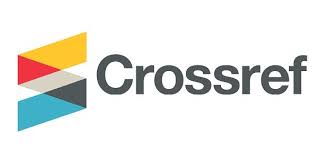DISPUTE SOLVING IN INDUSTRIAL RELATIONS BASED ON ACT NUMBER 2 YEAR 2004
DOI:
https://doi.org/10.33061/wh.v27i1.3990Keywords:
industrial dispute, industrial dispute solvin, and industrial relation.Abstract
Industrial relations dispute solving that managed in Act No.2 Year 2004 On Industrial Relations Dispute Solvingcan be solved by bipartite negotiation, conciliation, arbitration, mediation, and industrial relations dispute court. The principle of this matter is by putting negotiation first prior to other ways. As managed in Act No.2 Year 2004On Industrial Relations Dispute Solving everyone concerned are supposed to solve it in fast, fair, and cheap ways.
References
Abdul Khakim,2003, Pengantar Hukum Ketenagakerjaan Indonesia Berdasarkan Undang-Undang Nomor
Tahun 2003 (Edisi Revisi),Bandung,PT Citra Aditya Bakti
Asikin,Zainal (ed),1993, Dasar-Dasar Hukum Perburuhan,PT Raja Grafindo Persada,Jakarta.
Asri Wijayanti,2009, Hukum Ketenagakerjaan Pasca Reformasi,Jakarta,Sinar Grafika
Sentanoe Kertonegoro,1999, Hubungan Industrial,Hubungan Antara Pengusaha dan Pekerja (Bipartit)
dan Pemerintah (Tripartit),Jakarta,Yayasan Tenaga Kerja Indonesia
Shamad,Yunus,1995, Hubungan Industrial di Indonesia,Jakarta,PT Bina Sumberdaya Manusia
Widodo Hartono dan Judiantoro,1992, Segi Hukum Penyelesaian Perselisihan Perburuhan,Jakarta,PT
Raja Grafindo Persada
Undang-Undang Nomor 13 Tahun 2003 tentang Ketenagakerjaan
Undang-Undang Nomor 2 Tahun 2004 Tentang Penyelesaian Perselisihan Hubungan Industrial
Downloads
Published
How to Cite
Issue
Section
License
Authors who publish with this journal agree to the following terms:
- Copyright on any article is retained by the author(s).
- The author grants the journal, the right of first publication with the work simultaneously licensed under a Creative Commons Attribution License that allows others to share the work with an acknowledgment of the work’s authorship and initial publication in this journal.
- Authors are able to enter into separate, additional contractual arrangements for the non-exclusive distribution of the journal’s published version of the work (e.g., post it to an institutional repository or publish it in a book), with an acknowledgment of its initial publication in this journal.
- Authors are permitted and encouraged to post their work online (e.g., in institutional repositories or on their website) prior to and during the submission process, as it can lead to productive exchanges, as well as earlier and greater citation of published work.
- The article and any associated published material is distributed under the Creative Commons Attribution-ShareAlike 4.0 International License
















.png)


